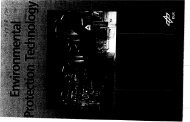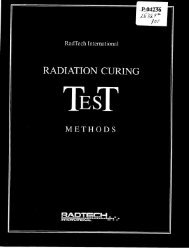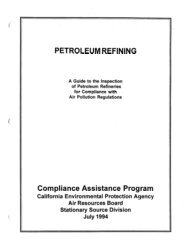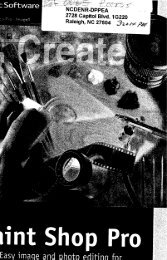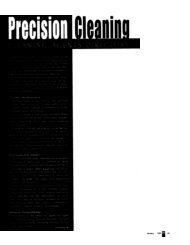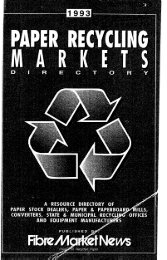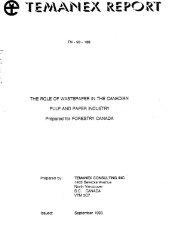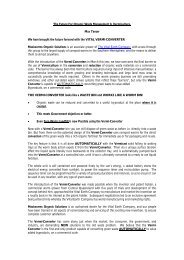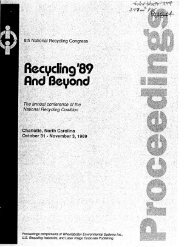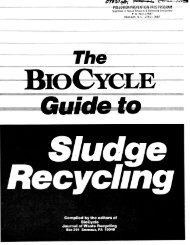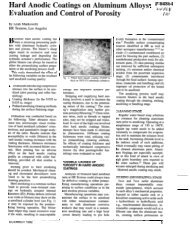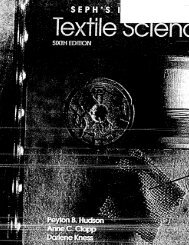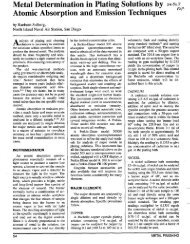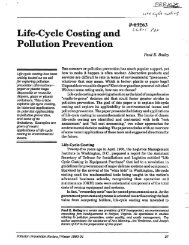Electronic Parts/Guidelines - infoHouse
Electronic Parts/Guidelines - infoHouse
Electronic Parts/Guidelines - infoHouse
Create successful ePaper yourself
Turn your PDF publications into a flip-book with our unique Google optimized e-Paper software.
9.0 Other <strong>Guidelines</strong> for Environmental Packaging<br />
9.1 Introduction<br />
Because of the increased awareness of solid waste disposal issues, the delivery and installation of<br />
IBM products can cause a concern with iBM's customers. That Is. what should be done with the dis-<br />
carded packaging material? The boxes, CUShiOning, film, pallets, strapping, etc., which allowed the<br />
products to arrive damage-free, once unpacked, can be perceived as a contribution to the solid waste<br />
problem.<br />
This perception Is, of course, related to the amount of post-consumer packaging material. Small<br />
systems, resulting in a few boxes and some cushioning are not usually seen as a problem. In fact,<br />
many customers retain these materials for later use (e.@, relocation of the system).<br />
Regardless of the size of any particular system, the overall volume of products IBM delivers worlawide<br />
does produce a considerable amount of post-consumer packaging material which becomes part of the<br />
solid waste stream. Understanding this, the IBM packaging community has an obligation to minimize<br />
the concerns our customers may have with packaging material disposal to the extent possible.<br />
9.2 Package Design<br />
The obvious place to begin an assessment of packaging as a disposal concern is in the area of design.<br />
Several trade associations (IoPP, etc.) and environmental task groups have developed guidelines for<br />
packaging design which they consider effective as a means to solid waste minimization. While none of<br />
the guidelines available provide product specific or "cook-book" detail for package design, they do<br />
present a well considered approach to packaging requirements development, which a packaging<br />
designer can translate into more environmentally friendly products.<br />
The Coalition of Northeastern Governors (CONEG) Source Reduction Task Force has developed and<br />
published a manual for preferred packaging practices. The manual is viewed as a first step in an<br />
awareness approach to packaging source reduction. The following is an excerpt from the final report<br />
of the Source Reduction Task Force.<br />
An Overriding barrier to source reduction identified by the Task Force Is the inadequate consideration<br />
given by Industry, government and consumers to the solid waste management impacts of packaging.<br />
Package design and production decisions by industry, regulatory and procurement policies of govern-<br />
ment and PUrChaSing decisions of consumers -- all have contributed to the mounting garbage crisis<br />
confronting the Northeast region. Yet if each of these players better understood the relationship of<br />
their actions to the management of solid waste, the generation and environmental impact of packaging<br />
could be reduced.<br />
To obtain a copy of the Preferred Packaging Manual write<br />
The CONEG Policy Research Center, Inc<br />
400 North Capital Street NW Suite 382<br />
Washington D. C. 20001<br />
To be most effective, source reduction initiatives must be based upon a system of quantifiable goals<br />
and standards. Developing such a system will require considerable thought and a thorough examina-<br />
tion of the many issues involved in assigning measurable, numerical goals and timeframes to achieve<br />
reductions in the generation of packaging waste<br />
Gther Guldellnes for Environmental Packaglng 69



